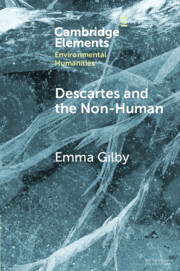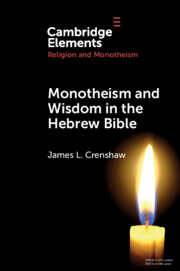Refine search
Actions for selected content:
98 results
Case 4
-
- Book:
- Debating Papal History, c. 250–c. 1300
- Published online:
- 03 November 2025
- Print publication:
- 20 November 2025, pp 60-70
-
- Chapter
- Export citation
Chapter 2 - Is a Kantian Environmental Ethic Coherent?
-
- Book:
- Kant and Environmental Philosophy
- Published online:
- 01 November 2025
- Print publication:
- 20 November 2025, pp 47-64
-
- Chapter
- Export citation
Chapter 7 - Suárez on Distinctions
- from Part II - Being, Its Properties, and Ancillary Notions
-
-
- Book:
- Suárez's <i>Metaphysical Disputations</i>
- Published online:
- 13 October 2025
- Print publication:
- 30 October 2025, pp 123-142
-
- Chapter
- Export citation
6 - Reversal, Reciprocity, and Revenge in Sectarian Fantasies of Eschatological Violence
-
- Book:
- Violence, Power, and Society in the Dead Sea Scrolls
- Published online:
- 29 September 2025
- Print publication:
- 16 October 2025, pp 164-197
-
- Chapter
- Export citation
4 - Sectarian Identity, Intensified Conflict, and the Turn to Violence
-
- Book:
- Violence, Power, and Society in the Dead Sea Scrolls
- Published online:
- 29 September 2025
- Print publication:
- 16 October 2025, pp 93-131
-
- Chapter
- Export citation
2 - From Contextless Accounts to Holistic Portraits of Violence
-
- Book:
- Violence, Power, and Society in the Dead Sea Scrolls
- Published online:
- 29 September 2025
- Print publication:
- 16 October 2025, pp 43-67
-
- Chapter
- Export citation
International Law in the Indonesian Constitutional Court: A Typology of Use
-
- Journal:
- Asian Journal of International Law , First View
- Published online by Cambridge University Press:
- 03 October 2025, pp. 1-22
-
- Article
-
- You have access
- Open access
- HTML
- Export citation
Chapter 8 - Summary and Objection
-
- Book:
- The Neural Structure of Consciousness
- Published online:
- 27 July 2025
- Print publication:
- 18 September 2025, pp 232-239
-
- Chapter
- Export citation
International Law, the Courts, and the Political Branches of Singapore: Painting a Complete Picture
-
- Journal:
- Asian Journal of International Law , First View
- Published online by Cambridge University Press:
- 15 September 2025, pp. 1-24
-
- Article
-
- You have access
- Open access
- HTML
- Export citation
Chapter 2.8 - Paranormal Explanations of NDE-Like Perceptions
- from Part II - Near-Death Experiences
-
- Book:
- Near-Death Experiences
- Published online:
- 30 August 2025
- Print publication:
- 04 September 2025, pp 120-124
-
- Chapter
- Export citation
Functional neurological disorder: reflecting on the ‘hot potato’ of modern medicine through a relational lens
-
- Journal:
- BJPsych Advances , FirstView
- Published online by Cambridge University Press:
- 26 August 2025, pp. 1-3
-
- Article
- Export citation
7 - Manichaeism
- from Part II - Case Studies
-
-
- Book:
- The Cambridge Companion to Christian Heresy
- Published online:
- 17 July 2025
- Print publication:
- 31 July 2025, pp 136-155
-
- Chapter
- Export citation
14 - Bogomils
- from Part II - Case Studies
-
-
- Book:
- The Cambridge Companion to Christian Heresy
- Published online:
- 17 July 2025
- Print publication:
- 31 July 2025, pp 276-300
-
- Chapter
- Export citation
15 - The Cathars
- from Part II - Case Studies
-
-
- Book:
- The Cambridge Companion to Christian Heresy
- Published online:
- 17 July 2025
- Print publication:
- 31 July 2025, pp 301-322
-
- Chapter
- Export citation
THE DISSOLUTION OF DUALISM
-
- Journal:
- The Cambridge Law Journal / Volume 84 / Issue 2 / July 2025
- Published online by Cambridge University Press:
- 06 August 2025, pp. 316-344
- Print publication:
- July 2025
-
- Article
-
- You have access
- Open access
- HTML
- Export citation
5 - The League of Nations and the Relationship between International Law and Municipal Law
-
-
- Book:
- The Cambridge History of International Law
- Published online:
- 01 May 2025
- Print publication:
- 29 May 2025, pp 130-161
-
- Chapter
- Export citation
Chapter 1 - Introduction and Background Assumptions
-
- Book:
- Explaining our Actions
- Published online:
- 17 April 2025
- Print publication:
- 08 May 2025, pp 1-19
-
- Chapter
- Export citation

Descartes and the Non-Human
-
- Published online:
- 02 May 2025
- Print publication:
- 29 May 2025
-
- Element
- Export citation
Christ’s dead limb
-
- Journal:
- Scottish Journal of Theology / Volume 78 / Issue 3 / August 2025
- Published online by Cambridge University Press:
- 03 April 2025, pp. 240-251
- Print publication:
- August 2025
-
- Article
-
- You have access
- Open access
- HTML
- Export citation

Monotheism and Wisdom in the Hebrew Bible
- An Uneasy Pair?
-
- Published online:
- 09 February 2025
- Print publication:
- 13 February 2025
-
- Element
- Export citation
